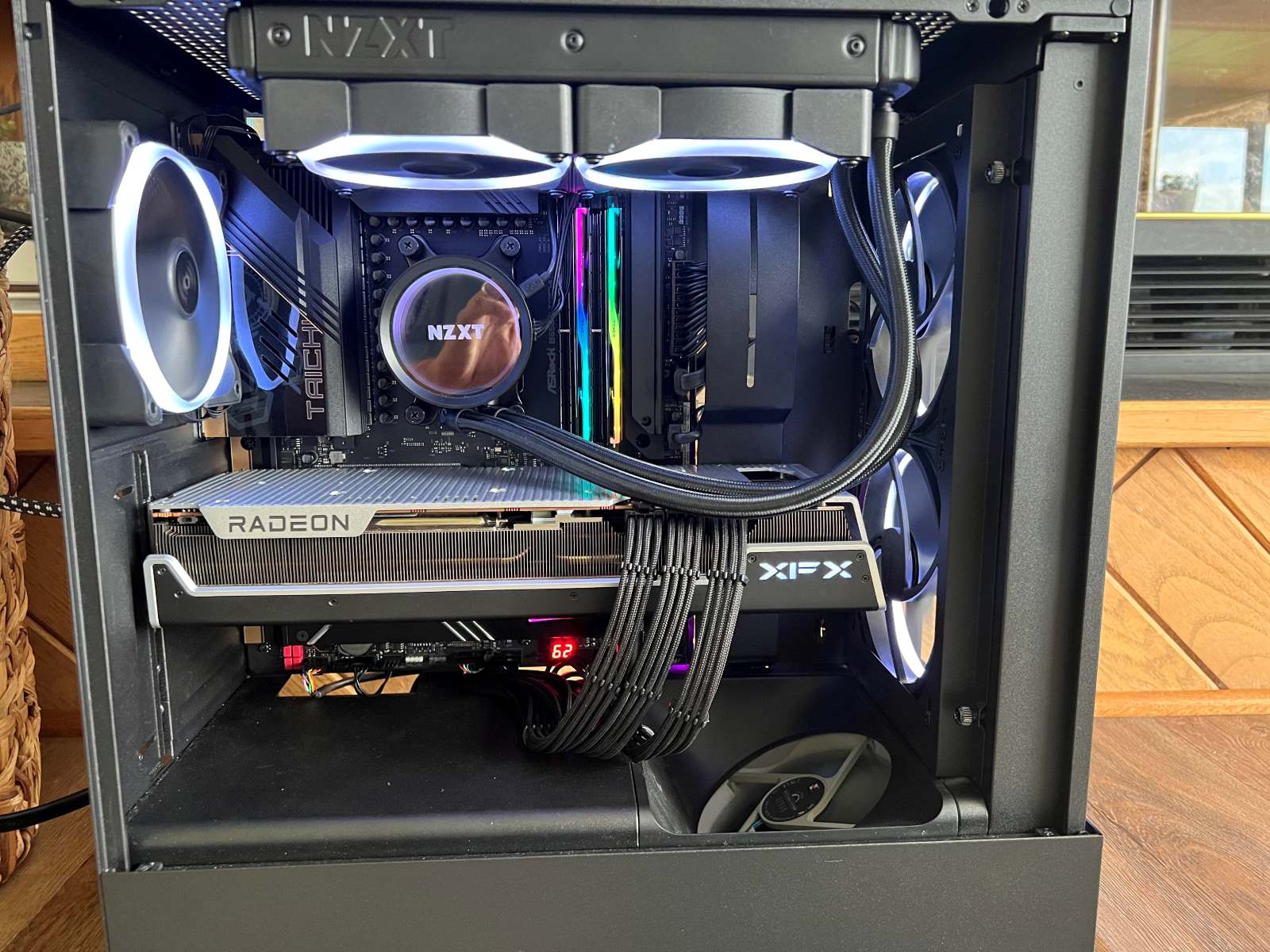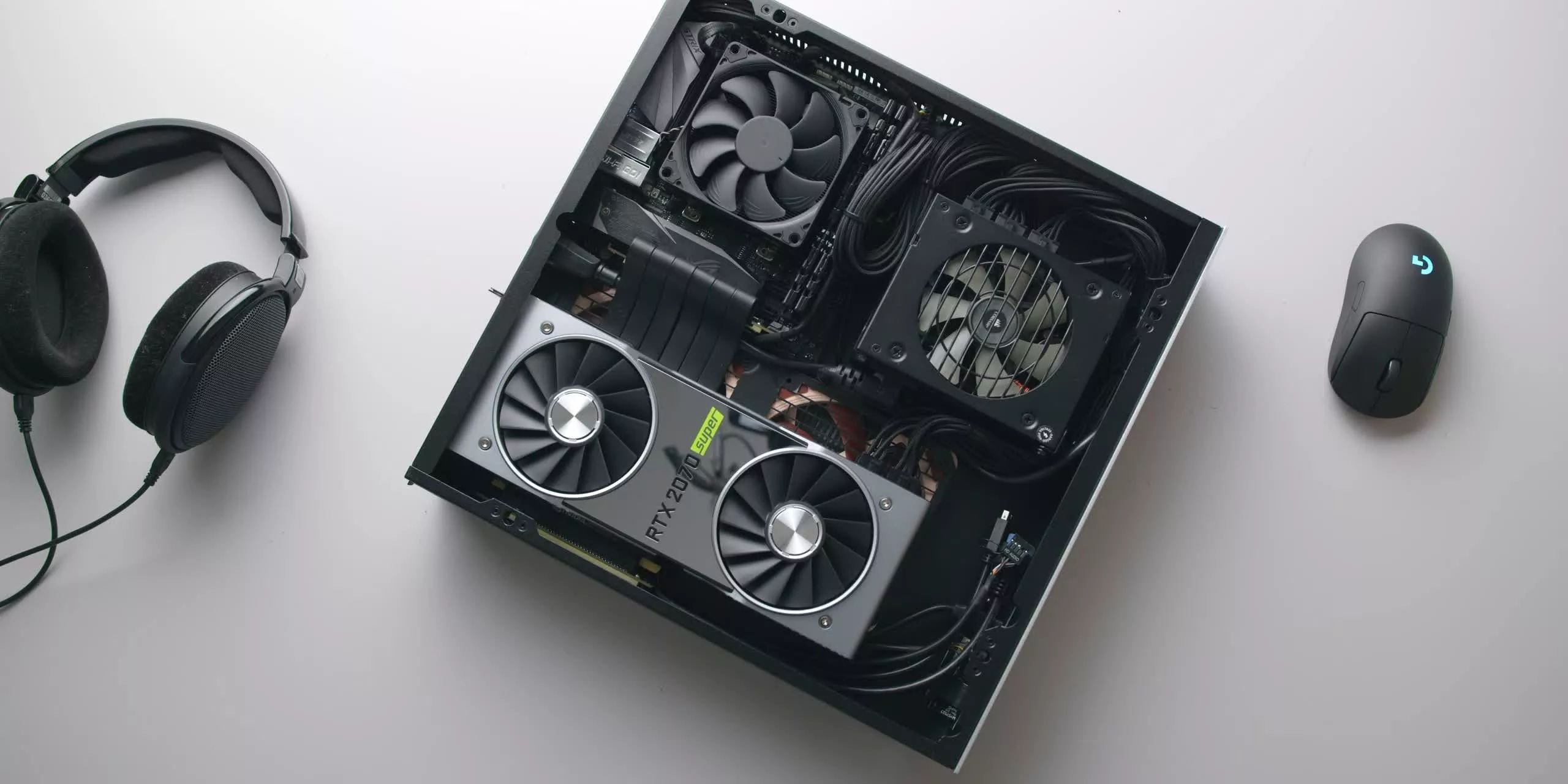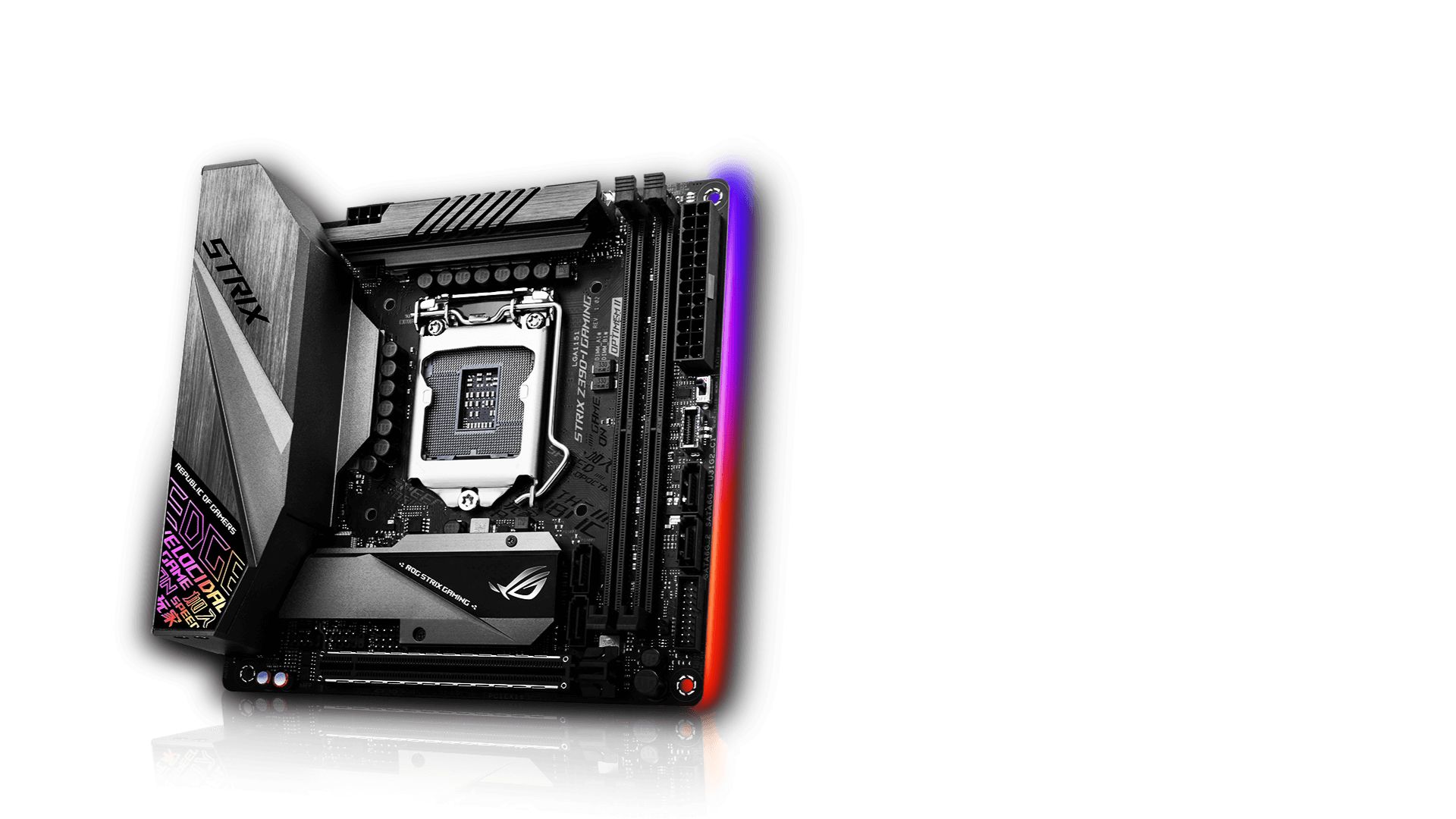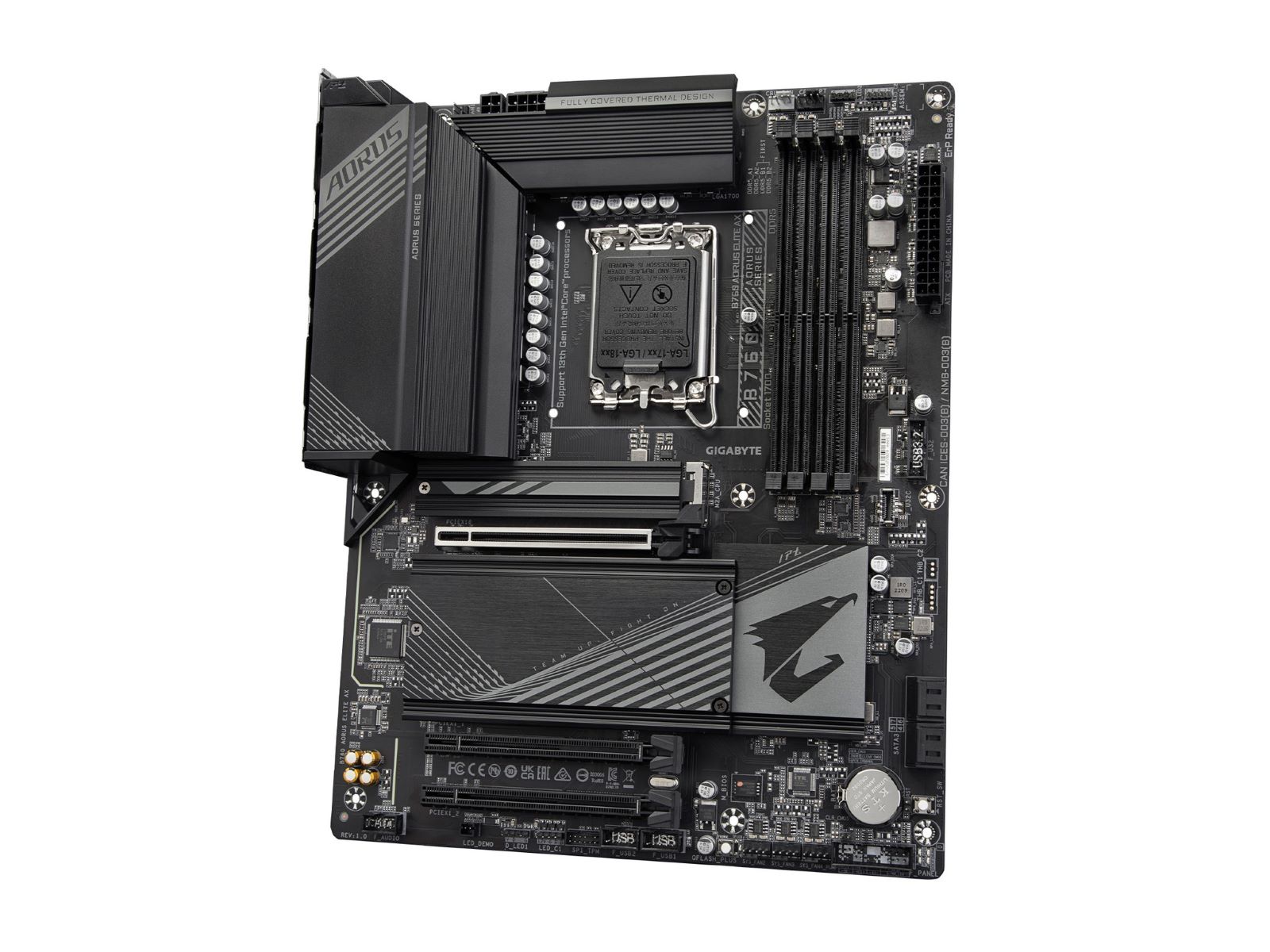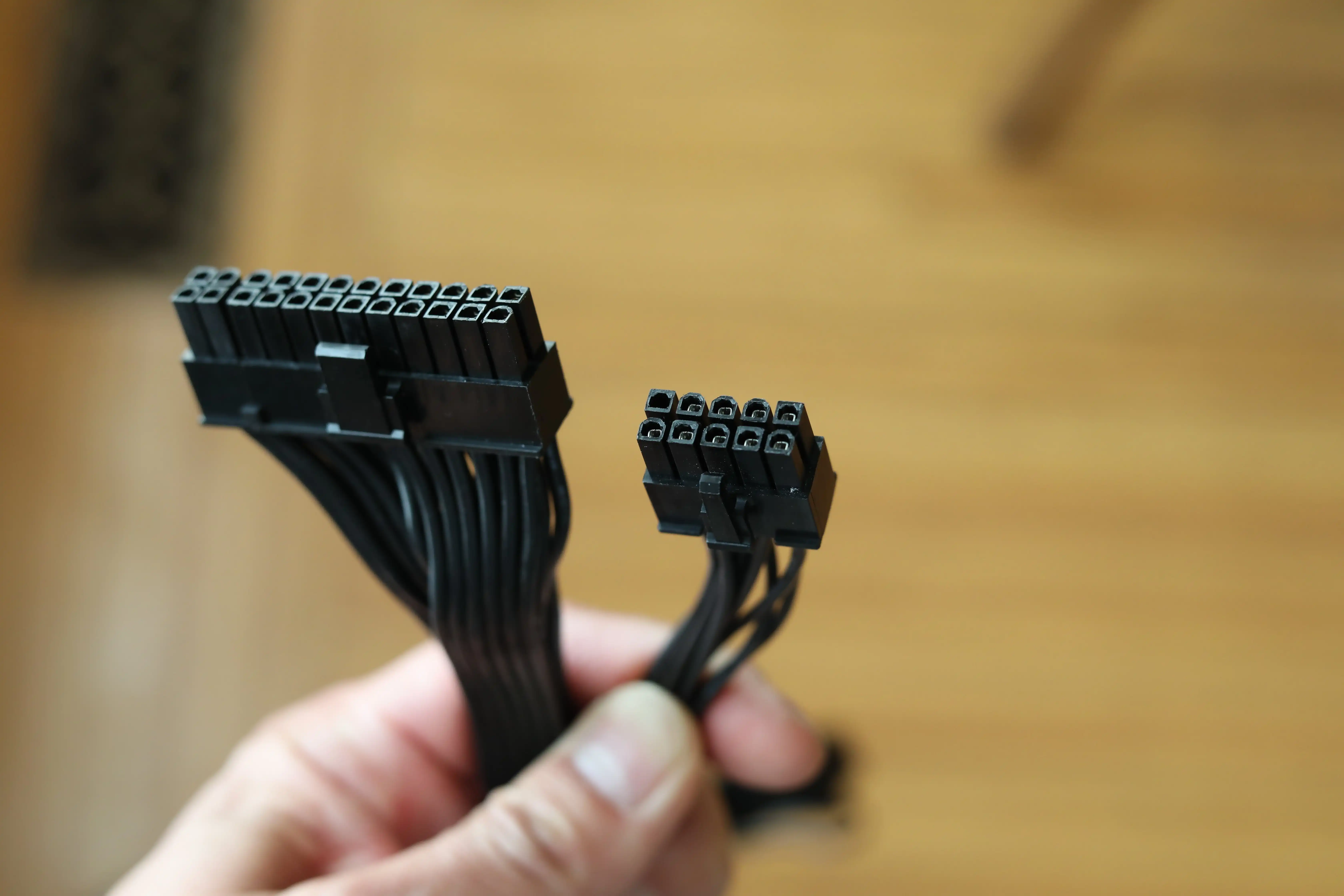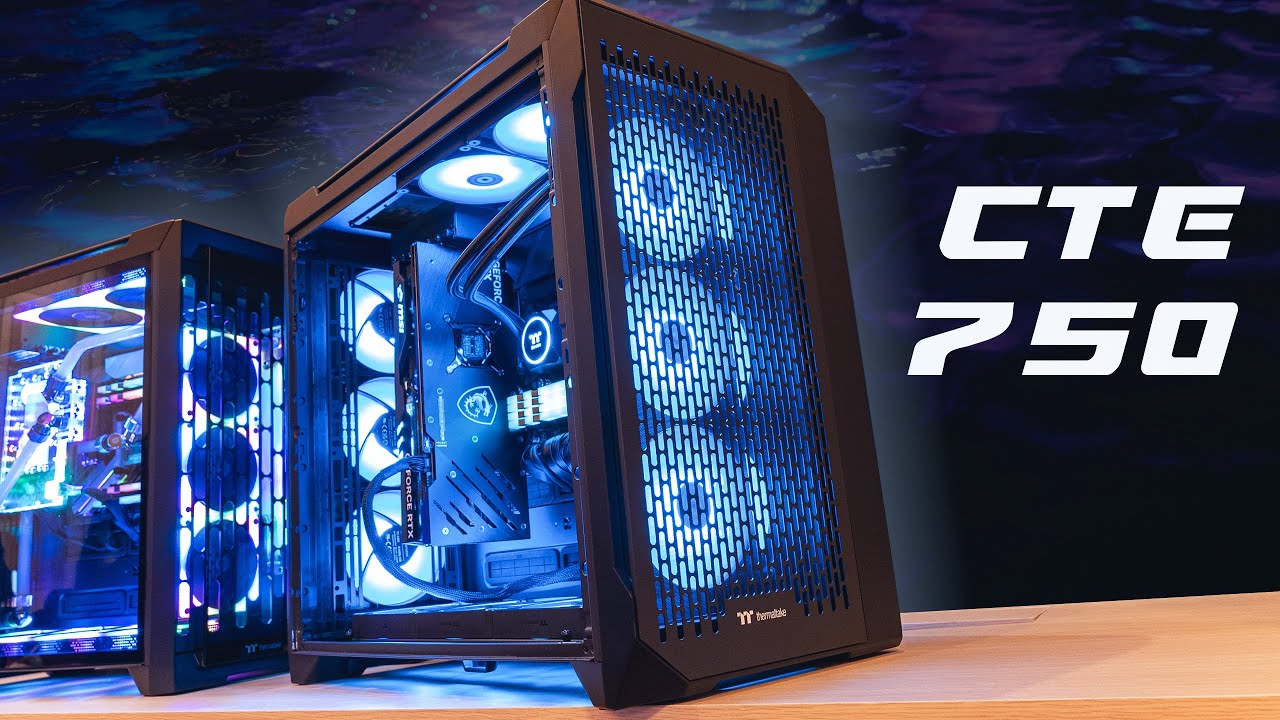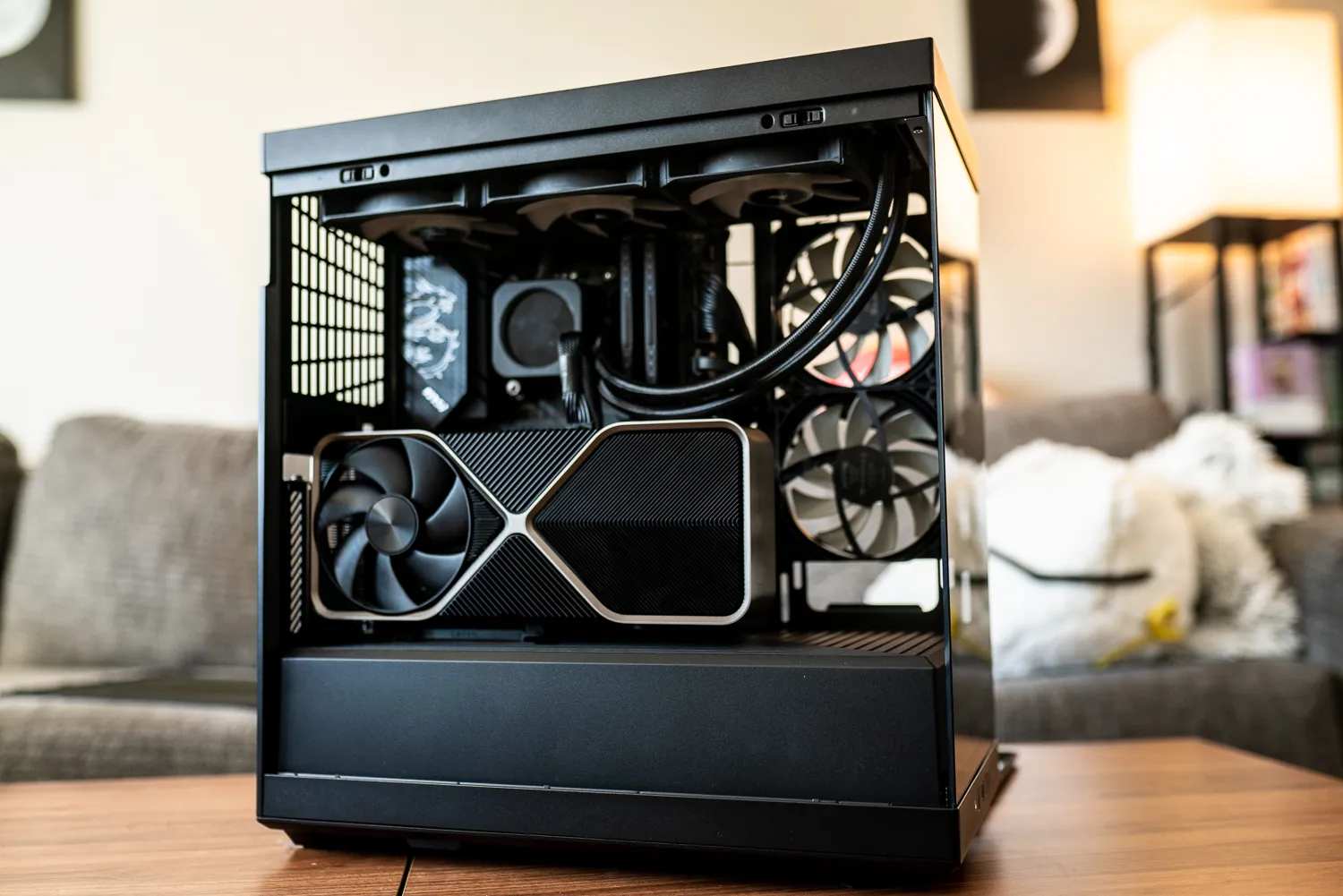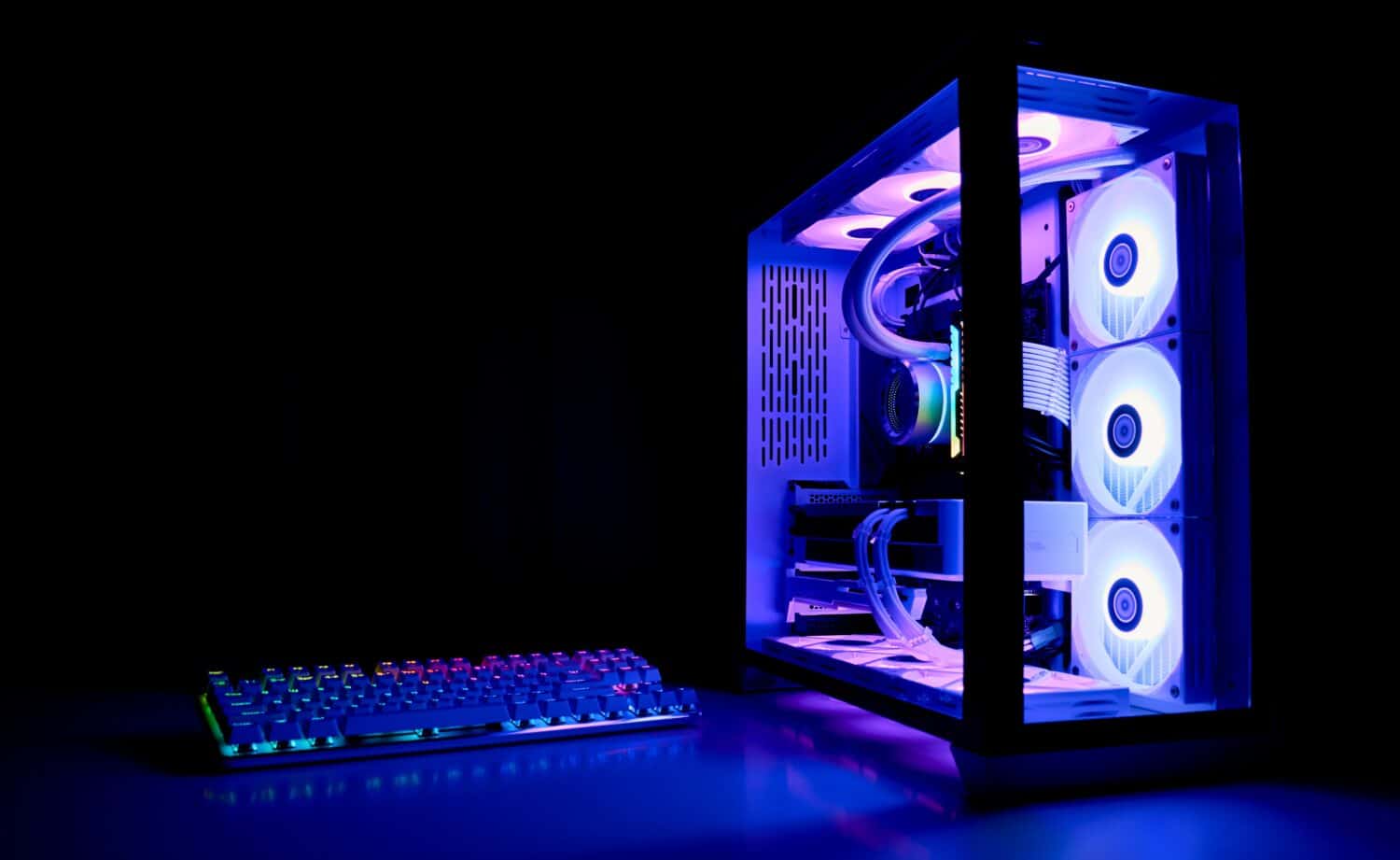What Is an E-ATX Motherboard?
An E-ATX (Extended ATX) motherboard is a larger form factor motherboard that is designed to fit into computer cases which support the standard ATX motherboard, but with an extended size. It is essentially an oversized version of the ATX motherboard, offering additional expansion slots and features.
The E-ATX motherboard is typically used in high-performance desktop or workstation computers where extensive customization and expansion capabilities are required. Due to its larger size, it provides more room for additional components and connectors, making it suitable for demanding applications such as gaming, content creation, and professional workstations.
One of the key differences between an E-ATX motherboard and a standard ATX motherboard is the size. While an ATX motherboard measures around 12 x 9.6 inches, an E-ATX motherboard can measure up to 12 x 13 inches or even larger. This larger size allows for additional expansion slots, more memory slots, and enhanced power delivery systems.
E-ATX motherboards typically provide support for multiple graphics cards, high-speed storage devices, and other peripherals. They offer a greater number of PCIe slots, allowing users to install multiple graphics cards for better gaming performance or advanced GPU-intensive tasks like video editing or 3D rendering.
Furthermore, E-ATX motherboards often feature more RAM slots, supporting larger amounts of memory. This is beneficial for tasks that require a significant amount of memory, such as running virtual machines or working with complex datasets in engineering or scientific applications.
Overall, an E-ATX motherboard offers enhanced performance and expandability compared to a standard ATX motherboard. It provides users with the flexibility to build a powerful system customized to their specific needs. However, it is essential to note that not all computer cases support E-ATX motherboards, so compatibility must be considered when choosing this form factor for your build.
What Does E-ATX Stand For?
E-ATX stands for Extended ATX. It is an abbreviation used to describe a larger form factor motherboard that is an extension of the standard ATX (Advanced Technology eXtended) motherboard.
The “E” in E-ATX represents the term “extended,” which refers to the fact that this motherboard form factor is larger than the traditional ATX size. The extended form factor allows for additional expansion slots, more memory slots, and enhanced power delivery systems, providing users with greater customization and performance capabilities.
The ATX standard was introduced by Intel in the late 1990s as an evolution of the older Baby AT form factor. It offered improved features and compatibility, making it the go-to choice for computer enthusiasts and builders. However, as technology advanced and the demand for more powerful systems increased, the need for larger motherboards became apparent.
E-ATX was developed to cater to users who required more expandability and performance from their systems. These motherboards offer larger dimensions than ATX motherboards, typically measuring around 12 x 13 inches or even larger. The additional space allows for more expansion slots, which can accommodate multiple graphics cards, networking adapters, or other peripherals.
Moreover, the extended size of E-ATX motherboards usually means more memory slots, enabling users to install larger amounts of RAM. This is especially advantageous for professionals who work with resource-intensive applications such as video editing, rendering, or scientific simulations.
It’s important to note that despite the larger size, E-ATX motherboards are still designed to be compatible with traditional ATX cases. However, due to their bigger dimensions, not all computer cases can accommodate E-ATX motherboards. Therefore, when considering an E-ATX build, it’s crucial to verify the compatibility of your chosen case with this motherboard form factor.
In summary, E-ATX stands for Extended ATX and represents a larger form factor motherboard that offers additional expansion slots, more memory slots, and improved performance compared to standard ATX motherboards. It allows for greater customization and is an ideal choice for users who require a high-performance system with extensive upgrade options.
E-ATX Motherboard vs. ATX Motherboard: What’s the Difference?
When it comes to choosing a motherboard for your computer build, two popular options are the E-ATX (Extended ATX) and ATX (Advanced Technology eXtended) motherboards. While they share some similarities, there are notable differences between the two:
Size: The most significant difference between E-ATX and ATX motherboards is their size. An ATX motherboard typically measures around 12 x 9.6 inches, while an E-ATX motherboard can be larger, measuring up to 12 x 13 inches or more. The extra size of an E-ATX motherboard allows for more expansion slots, memory slots, and improved power delivery systems.
Expansion Slots: E-ATX motherboards often provide more PCIe slots compared to ATX motherboards. This allows users to install multiple graphics cards or other expansion cards simultaneously. This feature is particularly beneficial for gamers and professionals working with GPU-intensive applications like rendering or machine learning.
Memory Slots: E-ATX motherboards typically offer more RAM slots than ATX motherboards. This enables users to install larger amounts of memory, which is advantageous for tasks that require a significant memory capacity, such as running virtual machines or working with large datasets in scientific or engineering applications.
Power Delivery: Due to their larger size, E-ATX motherboards often feature enhanced power delivery systems. They provide more power phases, which help ensure stable power delivery to the CPU and other components, especially during overclocking or high-demand scenarios.
Compatibility: While ATX motherboards are widely compatible with a variety of computer cases, E-ATX motherboards require larger cases specifically designed to accommodate their extended dimensions. It’s crucial to check the case compatibility before choosing an E-ATX motherboard, as not all cases support this larger form factor.
Use Cases: ATX motherboards are suitable for most standard desktop builds, offering a balance between size, features, and compatibility. E-ATX motherboards, on the other hand, are favored by enthusiasts, gamers, and professionals who require extensive customization options, such as multiple graphics cards, large amounts of memory, and advanced power delivery systems.
In summary, E-ATX and ATX motherboards differ primarily in size, expansion and memory slots, power delivery, compatibility, and use cases. E-ATX motherboards provide greater customization and performance capabilities but require larger cases and are more suited for demanding applications. ATX motherboards, on the other hand, offer a more versatile option that is compatible with a wider range of cases and is suitable for standard desktop builds.
Benefits of Using an E-ATX Motherboard
Utilizing an E-ATX (Extended ATX) motherboard in your computer build comes with several advantages that cater to users seeking greater customization and performance capabilities:
1. Enhanced Expansion Possibilities: One of the main benefits of an E-ATX motherboard is its increased number of expansion slots. These additional slots allow for the installation of multiple graphics cards, networking adapters, storage devices, and other peripherals. This is especially beneficial for gamers, content creators, and professionals who require extensive customization and improved performance for their specific tasks and applications.
2. More Memory Capacity: E-ATX motherboards typically offer more RAM slots compared to standard ATX motherboards. This allows users to install larger amounts of memory, which can greatly benefit applications that demand significant memory capacity. Tasks such as video editing, 3D rendering, data analysis, and running virtual machines can benefit from the increased memory capacity provided by E-ATX motherboards.
3. Advanced Power Delivery Systems: The larger size of E-ATX motherboards allows for improved power delivery systems. They often feature more power phases, which distribute power more efficiently to critical components such as the CPU and memory. This ensures better stability and performance, especially when the system is under heavy load or overclocked.
4. Better Cooling Potential: With more space available, E-ATX motherboards allow for larger and more efficient cooling solutions. This is vital for high-performance systems as it helps to dissipate heat effectively, preventing overheating and ensuring optimal performance. Additionally, the extra space on the motherboard can facilitate better airflow within the system, resulting in lower temperatures for the entire system.
5. Future-Proofing Potential: E-ATX motherboards are often designed with future technologies and specifications in mind. They typically offer the latest connectivity options, such as USB-C, Thunderbolt, and high-speed networking interfaces, ensuring compatibility with emerging technologies and allowing users to stay current with evolving standards.
6. Improved Aesthetics: The larger size of E-ATX motherboards can contribute to a visually impressive build. The additional expansion slots, memory slots, and power delivery components can create a more robust and eye-catching system. This can be particularly appealing to enthusiasts who prioritize aesthetics in their computer builds.
In summary, the benefits of using an E-ATX motherboard include enhanced expansion possibilities, increased memory capacity, advanced power delivery systems, better cooling potential, future-proofing potential, and improved aesthetics. These advantages make E-ATX motherboards an excellent choice for users who desire greater customization, performance, and scalability in their high-end desktop or workstation builds.
Drawbacks of Using an E-ATX Motherboard
While E-ATX (Extended ATX) motherboards offer numerous benefits, there are a few drawbacks that potential users should consider before opting for this larger form factor:
1. Compatibility with Cases: E-ATX motherboards require computer cases specifically designed to accommodate their larger dimensions. Not all cases in the market support E-ATX motherboards, so users must ensure that their chosen case can accommodate this form factor. Limited case compatibility can restrict the options available when building a system around an E-ATX motherboard.
2. Increased Cost: Due to their larger size and additional features, E-ATX motherboards often come with a higher price tag compared to standard ATX motherboards. The added cost may be a barrier for budget-conscious users or those who do not require the extensive customization and performance potential provided by E-ATX motherboards.
3. Space Requirements: The larger size of E-ATX motherboards can pose challenges when it comes to space availability. Their extended dimensions may limit compatibility with smaller computer cases or cramped desk setups. Users should ensure they have a suitable workspace and adequate room within their computer setup to accommodate the larger size of an E-ATX motherboard.
4. Increased Power Consumption: With more expansion slots, memory slots, and advanced power delivery systems, E-ATX motherboards typically consume more power compared to standard ATX motherboards. This may lead to slightly higher energy consumption, resulting in increased electricity costs over time. It is essential to consider the potential impact on your energy usage and budget when opting for an E-ATX motherboard.
5. Stability Concerns: The larger size and increased power demands of E-ATX motherboards may place additional strain on the system’s power supply. If the power supply is not adequately sized or of high enough quality, stability issues may arise. It is crucial to ensure that the power supply can provide sufficient power to all components and meet the demands of the E-ATX motherboard and other system components.
6. Limited Case Options: The selection of cases that can accommodate E-ATX motherboards is relatively limited compared to those that support standard ATX motherboards. This can limit users’ options in terms of aesthetics, features, and overall case design. It may require more research and searching to find a case that meets the desired criteria while supporting an E-ATX motherboard.
In summary, the drawbacks of using an E-ATX motherboard include limited case compatibility, increased cost, space requirements, increased power consumption, potential stability concerns, and a smaller selection of available cases. Despite these drawbacks, for users who require extensive customization and performance capabilities, an E-ATX motherboard can still be a worthwhile investment, provided that the drawbacks are taken into consideration and properly addressed.
Is an E-ATX Motherboard Right for You?
Deciding whether an E-ATX (Extended ATX) motherboard is suitable for your needs depends on several factors. Consider the following questions to determine if an E-ATX motherboard is the right choice for you:
1. What are your needs and usage requirements? If you are a gamer, content creator, or a professional who requires extensive customization, high performance, and scalability, an E-ATX motherboard may be a good fit. It provides additional expansion slots, more memory capacity, and advanced power delivery systems, catering to demanding applications such as gaming, video editing, rendering, and scientific simulations.
2. How important is future-proofing? E-ATX motherboards often incorporate the latest technologies and standards, ensuring compatibility with emerging hardware and connectivity options. If staying current with technological advancements is essential to you, an E-ATX motherboard can offer future-proofing potential with its support for advanced features and connectivity options.
3. Do you have a compatible computer case? It’s important to note that E-ATX motherboards require larger computer cases designed to accommodate their extended dimensions. If your current case or the case you are considering does not support E-ATX motherboards, you may need to invest in a compatible case to ensure a proper fit.
4. What is your budget? E-ATX motherboards generally come with a higher price tag compared to standard ATX motherboards due to their larger size and additional features. Consider your budget and whether the customization and performance benefits of an E-ATX motherboard justify the higher cost for your specific needs.
5. Do you have adequate space? The larger dimensions of E-ATX motherboards may require more space within your computer setup. Ensure that you have enough room in your workspace and that your current desk or computer area can accommodate the larger size of an E-ATX motherboard without causing space constraints or compromising airflow.
6. How important is aesthetics? If you value the visual appeal of your computer build, an E-ATX motherboard can contribute to an impressive aesthetic with its larger size and enhanced components. The additional expansion slots, memory slots, and power delivery systems can create a visually striking system, particularly for enthusiasts who prioritize aesthetics.
In summary, an E-ATX motherboard is well-suited for users who require extensive customization, high performance, and scalability in their computer builds. Consider your needs, budget, compatibility with cases, available space, and aesthetic preferences when deciding if an E-ATX motherboard is the right choice for you.
How to Determine if Your Computer Case Supports E-ATX Motherboards
Before purchasing an E-ATX (Extended ATX) motherboard, it is essential to ensure that your computer case is compatible. Here are some steps you can take to determine if your case supports E-ATX motherboards:
1. Check the case specifications: Start by examining the specifications of your computer case. Most reputable case manufacturers provide detailed specifications on their websites or product manuals. Look for information on supported motherboard form factors, and specifically check if E-ATX is listed as a supported size.
2. Measure the available space: If the case specifications do not explicitly mention E-ATX support, you can physically measure the available space inside your case. E-ATX motherboards typically measure around 12 x 13 inches or larger. Measure the width and length of the motherboard tray or the available area where the motherboard is installed. Ensure that these measurements can accommodate the larger size of an E-ATX motherboard.
3. Check for standoff locations: Standoffs are small metal pins that raise the motherboard off the case tray to prevent electrical contact. Look for the standoff screw holes on the motherboard tray. E-ATX motherboards often require additional standoff locations due to their larger size. Check if your case has enough standoff locations to properly secure an E-ATX motherboard.
4. Verify PCIe slot compatibility: E-ATX motherboards usually provide more PCIe slots for expansion cards. Check if your case has enough clearance and cutouts for the additional expansion slots. Verify that the slots align properly with the case’s rear panel, allowing for easy access and installation of expansion cards.
5. Consider cable management: The larger size of E-ATX motherboards can impact cable management within the case. Assess if your case has sufficient cable routing options, tie-down points, and space behind the motherboard tray to accommodate the additional cables required for an E-ATX build. Adequate cable management not only improves airflow but also reduces clutter and makes system maintenance easier.
6. Research user experiences: Search for user experiences or reviews from individuals who have used an E-ATX motherboard in the same or similar case. This can provide valuable insights on the compatibility of the specific case with an E-ATX motherboard and highlight any potential challenges or modifications needed for a successful installation.
By following these steps, you can determine if your computer case supports E-ATX motherboards. Remember to consider both the physical space available and the necessary standoff locations, as well as compatibility with PCIe slots and cable management. Ensuring compatibility will help you avoid any issues during the installation process and ensure a secure and functional E-ATX build within your chosen case.
Examples of Popular E-ATX Motherboards
There are several popular E-ATX (Extended ATX) motherboards available in the market, offering a range of features and performance capabilities. Here are a few examples of well-regarded E-ATX motherboards:
1. ASUS ROG Rampage VI Extreme Encore: This motherboard is designed for high-end gaming and professional applications. It supports the Intel LGA 2066 socket and features an optimized power delivery system, multiple PCIe slots for multi-GPU setups, and extensive connectivity options. The ROG Rampage VI Extreme Encore boasts advanced overclocking capabilities and is known for its superb performance and stability.
2. Gigabyte X570 Aorus Xtreme: Aimed at enthusiast gamers and content creators, the X570 Aorus Xtreme supports AMD Ryzen processors with the AM4 socket. It features a robust power solution, comprehensive cooling mechanisms, advanced PCIe 4.0 support, and an impressive array of connectivity options. This motherboard offers exceptional performance and versatility for demanding tasks.
3. MSI MEG Z490 Godlike: The MEG Z490 Godlike is a feature-rich motherboard designed for gaming enthusiasts. It supports Intel processors with the LGA 1200 socket and offers extensive connectivity options, including multiple M.2 slots and Thunderbolt 3 support. This motherboard stands out with its stunning design, customizable RGB lighting, and exceptional performance for both gaming and content creation applications.
4. ASRock X570 Aqua: The X570 Aqua is a limited-edition motherboard that combines high-end components and an eye-catching design. It supports AMD Ryzen processors and offers features like a water-cooling monoblock, Thunderbolt 3 ports, and Intel 2.5 Gb Ethernet. The X570 Aqua is highly regarded for its exceptional build quality, aesthetics, and performance.
5. EVGA Z490 Dark: Designed for overclocking enthusiasts and performance-minded users, the Z490 Dark is a standout motherboard from EVGA. It supports Intel processors with the LGA 1200 socket, features a robust power delivery system, and offers features like reinforced PCIe slots and dual Gigabit Ethernet. This motherboard is well-known for its top-tier performance, robust build quality, and enthusiast-friendly features.
These examples represent just a fraction of the E-ATX motherboards available in the market. It’s important to choose a motherboard that aligns with your specific requirements, budget, and compatibility with other components in your build. Conduct thorough research, read reviews, and compare the features and specifications of different E-ATX motherboards to find the one that best suits your needs.
Tips for Installing an E-ATX Motherboard
Installing an E-ATX (Extended ATX) motherboard requires careful attention and proper preparation to ensure a successful installation. Here are some tips to help you during the process:
1. Check case compatibility: Before starting the installation, ensure that your computer case is compatible with E-ATX motherboards. Verify that the case can accommodate the larger dimensions of the motherboard and supports the necessary standoff locations and expansion slots required for an E-ATX build.
2. Prepare the workspace: Clear your workspace and make sure you have enough room to work comfortably. A clutter-free environment makes it easier to handle the larger size of the E-ATX motherboard and minimizes the risk of accidents or damage to components.
3. Read the motherboard manual: Familiarize yourself with the E-ATX motherboard’s manual before installation. It provides crucial details and instructions specific to your motherboard model. Pay attention to the proper placement of components, such as CPU, RAM, and expansion cards.
4. Mount standoffs properly: Mount the standoffs on the case’s motherboard tray at the appropriate locations for the E-ATX motherboard. Ensure that the standoffs align with the pre-drilled holes on the motherboard, as this will help prevent grounding or short-circuiting issues. Use a screwdriver to secure the standoffs firmly in place.
5. Position the I/O shield: Insert the I/O shield into the corresponding opening on the rear of the case. Make sure it is firmly in place and properly aligned with the motherboard’s I/O ports. This shield helps to provide a clean and secure connection between the motherboard and external devices.
6. Install CPU and memory: Carefully install the CPU into the motherboard socket following the manufacturer’s instructions. Install memory modules into the appropriate slots, ensuring they are properly seated and locked into place. Double-check the motherboard manual for specific guidelines on proper installation techniques.
7. Install expansion cards and storage devices: Install your graphics card, network adapter, and other expansion cards into the appropriate PCIe slots. Ensure they are properly aligned and securely fastened. Install storage devices like SSDs or HDDs into the designated drive bays, following the case and motherboard specifications.
8. Connect power and data cables: Connect the power supply cables to the motherboard’s power connectors, ensuring a secure and proper connection. Connect data cables to the storage devices, as well as any other necessary connections such as USB headers or audio connectors. Follow the motherboard manual for specific instructions on cable connections.
9. Test and secure connections: Double-check all connections to ensure they are secure and properly seated. Before fully securing the motherboard in the case, perform a quick test boot to verify that all components, such as CPU, memory, and storage, are recognized and functioning correctly.
10. Secure the motherboard: Once all connections have been verified, gently position the motherboard into the case, aligning the standoffs with the corresponding holes. Use screws provided with the case to secure the motherboard to the standoffs. Ensure that the motherboard is level and not flexing under its weight.
Remember, installing an E-ATX motherboard requires patience and precision. Take your time, follow the manufacturer’s instructions, and refer to the motherboard manual whenever needed. By following these tips, you can ensure a successful installation and enjoy the benefits of your E-ATX system.
Frequently Asked Questions About E-ATX Motherboards
Here are answers to some common questions related to E-ATX (Extended ATX) motherboards:
Q: What is the difference between E-ATX and ATX motherboards?
A: The main difference between E-ATX and ATX motherboards lies in their size and expansion capabilities. E-ATX motherboards are larger, offering more expansion slots and memory slots compared to standard ATX motherboards. E-ATX motherboards also tend to have enhanced power delivery systems and are designed for high-performance systems that require extensive customization options.
Q: How do I know if my computer case supports an E-ATX motherboard?
A: To determine if your computer case is compatible with an E-ATX motherboard, you can check the case specifications provided by the manufacturer. Look for explicit mention of E-ATX support. Alternatively, you can physically measure the available space inside the case to ensure it can accommodate the larger dimensions of an E-ATX motherboard.
Q: Can I use an E-ATX motherboard in a standard ATX case?
A: In some cases, it may be possible to use an E-ATX motherboard in a standard ATX case, depending on the layout and dimensions of the case. However, you should ensure that the case has enough space and the necessary standoff locations to accommodate the larger size of an E-ATX motherboard. It is recommended to check the case specifications and consult with the case manufacturer for compatibility information.
Q: Are E-ATX motherboards more expensive than ATX motherboards?
A: Generally, E-ATX motherboards do tend to be more expensive than standard ATX motherboards. This is due to their larger size, additional features, and enhanced performance capabilities. The increased cost reflects the advanced power delivery systems, greater expansion options, and improved memory capacities offered by E-ATX motherboards.
Q: Can I install an E-ATX motherboard myself?
A: Yes, you can install an E-ATX motherboard yourself if you have basic computer hardware knowledge and experience with building computers. Ensure that you follow safety precautions, read the motherboard manual carefully, and consult online resources or video tutorials if needed. Take your time during the installation process to ensure that all components are properly seated and connected.
Q: What are the benefits of using an E-ATX motherboard?
A: E-ATX motherboards offer enhanced expansion possibilities with more PCIe slots and memory slots compared to standard ATX motherboards. They often feature advanced power delivery systems, improved cooling potential, and future-proofing capabilities. E-ATX motherboards are particularly suitable for users who require extensive customization options and high-performance systems for gaming, content creation, and professional workstations.
Q: Are E-ATX motherboards only for gaming?
A: While E-ATX motherboards are popular among gamers due to their expansion capabilities, they are not limited to gaming applications. E-ATX motherboards are suitable for a wide range of tasks that require high-performance systems, such as video editing, 3D rendering, scientific simulations, and professional workstations. Their customization options and improved performance make them appealing for various demanding applications.
These are just a few frequently asked questions about E-ATX motherboards. If you have more specific inquiries or concerns, it’s always best to consult with the motherboard manufacturer or seek advice from experienced computer builders or forums.







